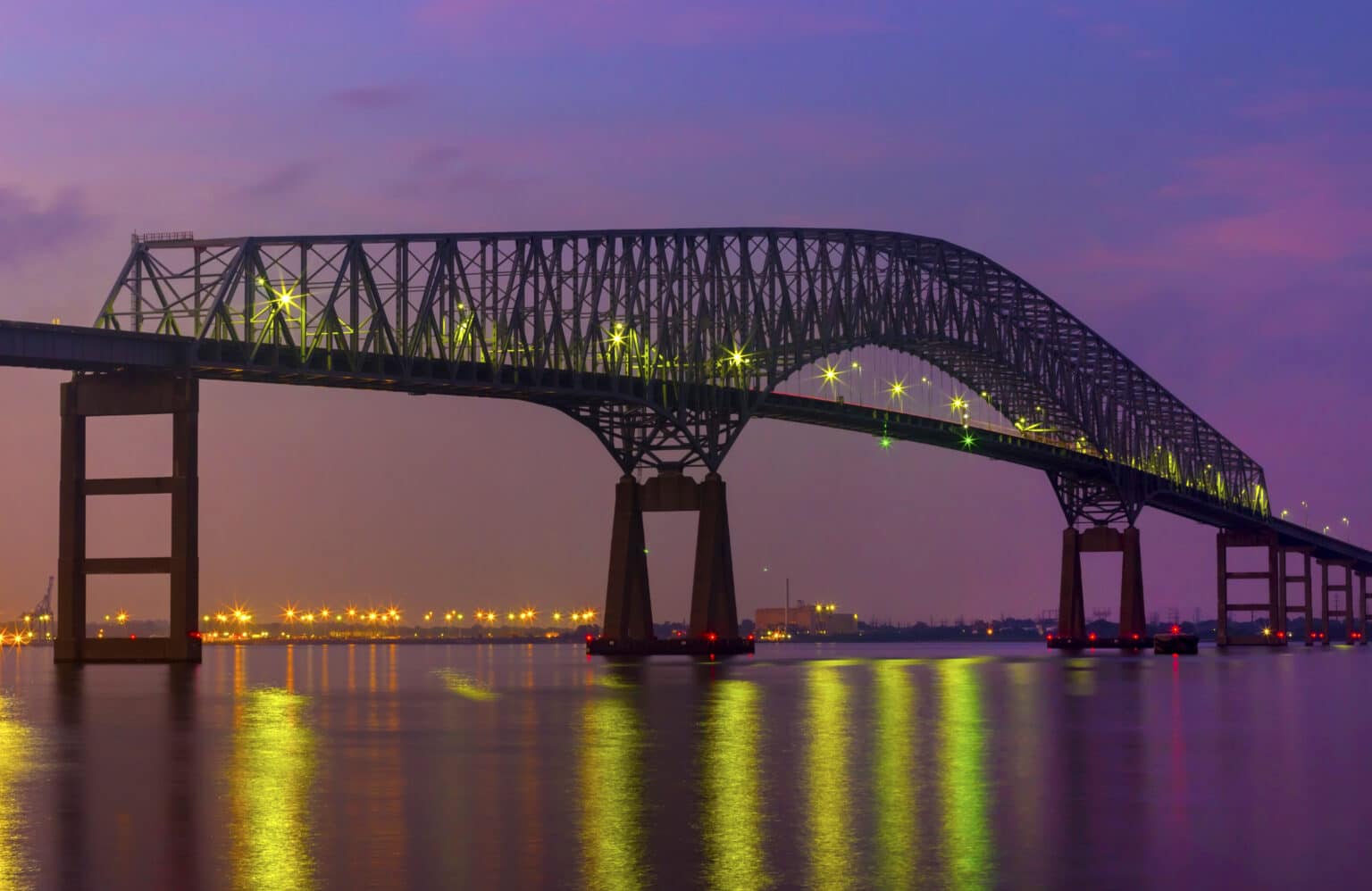Francis Scott Key Bridge collapse in Baltimore: impact and ongoing recovery efforts
- March 28, 2024
- 12:41 pm


Iain Hoey
Share this content
Overview of the bridge collapse
In the early hours of a Tuesday, a significant event unfolded that would mark one of the largest infrastructure disasters in Maryland’s history.
The Francis Scott Key Bridge, a vital steel structure spanning 1.6 miles and standing 185 feet high, collapsed following a collision with the Dali, a Singapore-flagged container ship.
This incident occurred under a full moon as the ship, loaded and headed for Sri Lanka, drifted off course and struck the bridge at 1:28 a.m., leading to the bridge’s immediate collapse into the Patapsco River.
Immediate response and the aftermath
The moments leading up to and following the collapse were filled with urgency and disbelief among first responders.
Maryland Transportation Authority Police, upon realising the ship’s loss of control, moved quickly to halt all traffic on the bridge.
Despite their efforts, the construction crew working on the bridge at the time of the collision did not evacuate in time, resulting in tragic losses.
Governor Wes Moore later commended the officers for their actions, stating, “They saved lives,” during a mid-morning briefing.
The aftermath saw the initiation of search and recovery operations, revealing the profound human and economic impact of the disaster.
Investigation and recovery efforts
The National Transportation Safety Board (NTSB) took immediate action by boarding the Dali to collect evidence and retrieve data from the voyage data recorder.
Jennifer Homendy, chair of the NTSB, indicated that a preliminary report could be expected within weeks, emphasising the urgency of issuing safety recommendations.
Meanwhile, recovery efforts intensified, with Maryland’s Governor Moore pledging to devote all necessary resources towards the search for the six missing workers and ensuring support for their families.
This commitment underlines the state’s resolve to address the consequences of the collapse comprehensively.
Rebuilding and implications for infrastructure safety
The collapse has ignited discussions on infrastructure safety and the adequacy of protective measures for key structures.
Engineers and experts have criticised the apparent lack of robust protection systems, such as fenders and dolphins, around the bridge’s support columns.
The incident has prompted a reevaluation of safety standards and the implementation of more stringent protective measures to prevent similar disasters in the future.
IFSJ Comment
The collapse of the Francis Scott Key Bridge serves as a stark reminder of the vulnerabilities in our infrastructure and the dire consequences of their failure.
This incident underscores the importance of rigorous safety inspections, the implementation of robust protective measures, and the need for immediate and coordinated emergency response efforts.
It highlights the critical role of ongoing infrastructure maintenance and the adoption of advanced technologies to prevent future tragedies.
The recovery efforts and the investigation into the causes of this disaster will undoubtedly contribute to stronger safety protocols and designs in infrastructure projects moving forward.
Our thoughts remain with the victims and their families as the community begins the process of healing and rebuilding.

